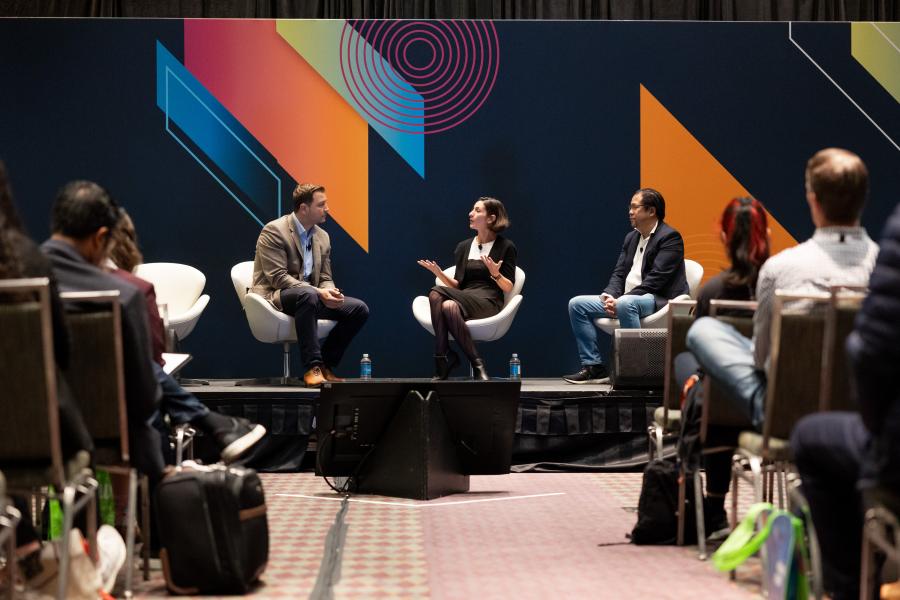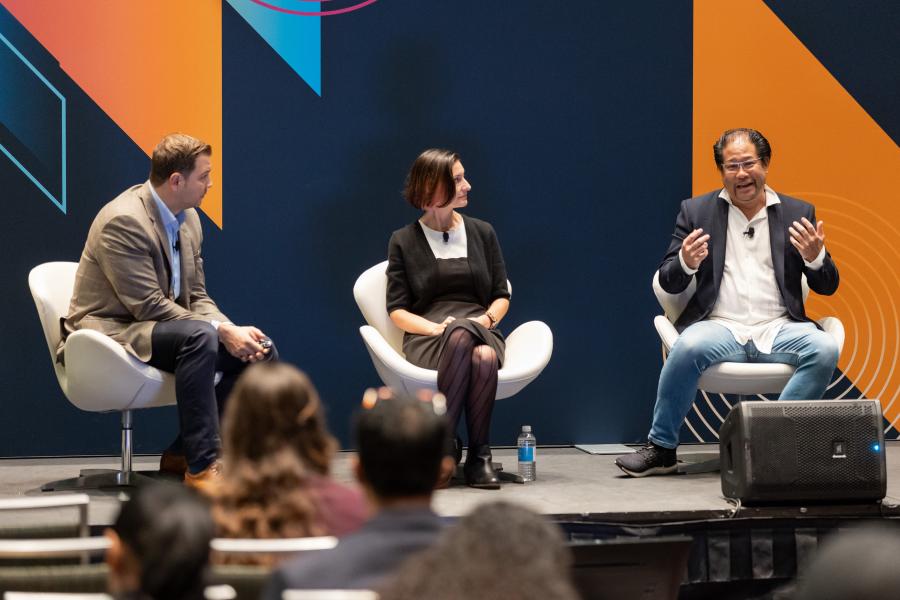Imagine extending a live event into the digital world in a manner that enables your audience to interact with each other, with cast members and virtual characters in real time, during the show, as well before and afterwards. Welcome to the metaverse!
The professional baseball team Minnesota Twins launched an augmented reality, metaverse app last year at Target Field in Minneapolis in which the Target dog Bullseye pitches a virtual ball to fans, who can track where it goes in the stadium after they hit it. The app also enables the 40,000 fans in the stadium to see the same real-time 3D effects and participate in shared experiences.
“This same technology can easily be deployed in a theme park,” says Dana Ware, the chief creative officer at ARound, the company that developed and deployed the Minnesota Twins’ metaverse experience.
“Imagine a family of five that can't really make it to Disney World too many times, because of the cost. They will still be able to interact with Mickey Mouse or Star Wars or Marvel characters, even when they're not physically at Orlando," adds Gregg Katano, the head of the tech consultancy Cosmos Collab. “This creates a community outside of the physical space where they can continue chatting all year, share videos and buy merchandising.”
Beyond the Hype: A Growing Industry Segment
In 2017, Katano was helping lead strategy and marketing at Hologate, when it launched a multi-player VR system at the IAAPA Expo. In four days, Hologate sold 73 systems. Their VR experience is now in 44 countries and more than 20 million people have played it.
Since Hologate’s product launched, it has become significantly easier to create virtual content.
“The tools are becoming a lot more democratized,” Katano says. “Students who were in the audience today have access to a lot of these free tools, like Unreal Engine and Unity. What's making me excited is that it's really getting to the level where anybody can use these tools to build worlds and entertain people in their world.”
While consumer awareness of extended reality—a term that encompasses virtual reality, augmented reality and mixed reality—has increased over the past six years, there are still several challenges to the metaverse’s widespread adoption.
“Most companies are still new to these emerging technologies,” Katano adds. “We're all in this place of trying to understand not only what the experience is like, but how does it incorporate into specific business models. When that starts to click, then it's going to make sense for more companies.”
“Don't do technology for technology's sake,” he advises. “It's got to be really well thought out and has to check all the boxes: How are people going to access it? Are we going to be able to replicate the experience that they know us for? What is the the value proposition here? Are they going to be able to buy merchandising? Are they going to be able to continue evangelizing our brand?”
‘Carry Me Home’
One company that embarked on a large project to extend live entertainment into the metaverse is Les 7 Doigts (“The 7 Fingers”), a Montreal-based circus company. It invested $2 million and two years to produce a virtual version using real-time motion capture of “Carry Me Home,” the story of an artist revisiting his childhood memories.
“We managed to create an amazing new experience that had never been done before,” says Les 7 Doigts Vice President for Strategic Development and Innovation Alexandre Teodoresco, “but it’s too expensive to operate. We didn’t make it in a way that we can tour it in a cost-effective way.”
Les 7 Doigts initially wanted to essentially broadcast the metaverse show direct to viewers, but it found that the majority of its audience is not familiar with virtual reality or does not own the right equipment. This experience has led the company to shift its focus to partnerships with museums, science centers and other attractions.
“[The metaverse] immerses people in amazing, fantastical worlds,” Teodoresco says. “You can't afford to be left out. People are asking for more of these experiences. If you're proud of positioning yourself as a theme park or FEC that is innovative, you need to invest now. By the time you come out with the experience, it's going to be already a year to 18 months.”



